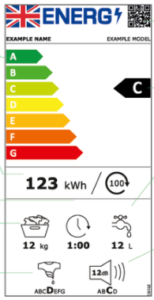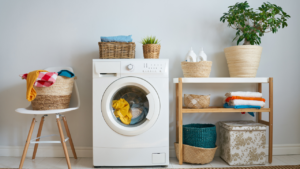Choosing energy efficient home appliances
07 Sep 2021
Decarbonisation
Around half the energy used in our homes is consumed by only a few appliances. It’s important to choose carefully as we strive to reduce our carbon footprints, as appliances are a big investment and if well cared for, they can last for years.
By selecting an energy efficient home appliance, you could save money on your energy bills as well as help the environment.
Here are our top three things to consider when you’re looking for your new items.
1. Understanding the energy labels

Each home appliance will have an energy label attached to the product or on the website listing. These will help you pick an energy efficient item that’s suited to your needs. Here’s an example label for a washing machine.
The A-G rating on the left will show how energy efficient the item is, with A being the most efficient and G being the least.
Choosing an appliance higher up the scale means it will use less energy in your home and will cost you less to run.
To find out what rating the item you’re looking at is, check where the black pointer symbol is pointing next to the scale.
The icons at the bottom give more detail about the product. As this one is for a washing machine, the tap icon shows the water consumption per cycle, the clock shows the duration of the ‘eco’ setting on the machine and the speaker icon shows the level of noise it emits.
2. Only buy the size you need
Someone living alone won’t need the same size washing machine or dishwasher as a family of five, so keep this in mind. For example, if you never have enough dirty clothes to fill your washing machine, you’re spending more money and using more energy than if you purchased a smaller machine.
3. Decide if design is worth it
Choosing the style of your appliance is fun when making a purchase but check if it will cost you more in the long run. Fridges with the freezer on the top or bottom are generally more energy efficient than those with side-by-side doors and features such as water dispensers bump up the energy use and cost to run.







